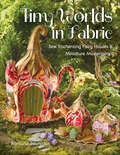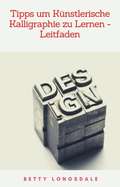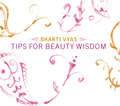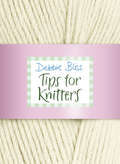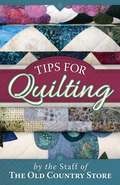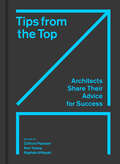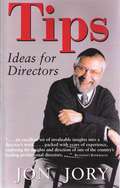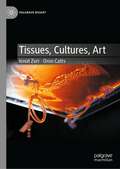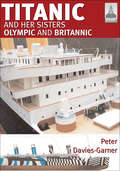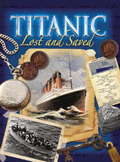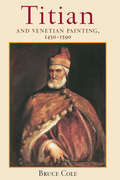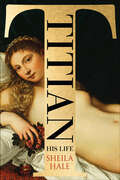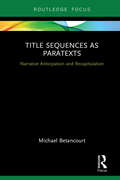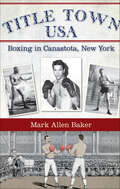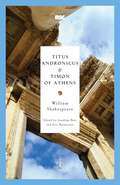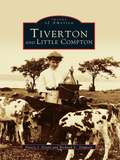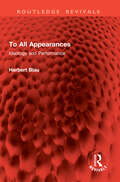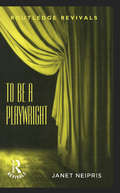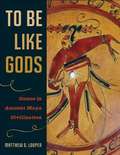- Table View
- List View
Tiny Worlds in Fabric: Sew Enchanting Fairy Houses & Miniature Masterpieces
by Ramune JauniskisCreate fairy houses and more tiny whimsical treasures! Have you ever wanted to make your own miniature fairy house? Let fiber artist Ramune Jauniskis be your guide to the enchanting world of miniature 3D pieces of art! Create treasured works by learning how to paint fabric, use fabric fusing with fast2fuse, and incorporate scraps and pre-loved fabrics. Make more than 20 16 irresistible pieces with full instructions and step-by-step photos, or create unique one-of-a-kind pieces using Ramune’s techniques. Her light-hearted humor and passion for the creative process reach past the page, making her a strong guide for readers who want to ignite their creativity and make intricate 3D pieces. Enchanting projects feature trendy motifs such as fairies, mermaids, and more! Readers explore unexpected inspiration and ideas to awaken creativity Easy-to-follow instruction centered on play and time-tested skills for beginner to experienced crafters
Tiny Yarn Animals
by Tamie SnowFrom the creator of RoxyCraft. com, a collection of adorable crocheted creatures. This colorful guide presents twenty-one sweet and simple-to-make yarn creatures for crafters young and old. Each animal is assembled using several basic crochet stitches?stitches even beginners can easily master?and the results, from a winsome little lamb to a wide-eyed lemur, make for delightful yarn friends. .
Tiny and Beautiful (Fountas & Pinnell Classroom, Guided Reading)
by Joanna CruzNIMAC-sourced textbook. Most art stands out. But some works of art are so tiny you need to look very closely to see them. Meet some artists who create these tiny works of art.
Tioga and Collinsville (Images of America)
by Don Davenport J. R. DavenportTwo small towns in Texas, Tioga and Collinsville have a rich heritage and a mutual bond. Separated by only six miles, citizens of each have relatives in the other city. The silvery railroad tracks that stretch between the two towns have served as a liaison between Tioga and Collinsville--and the rest of the world--for many years. Both towns had train depots, but unfortunately, the depots went the way of the mineral baths and mineral waters of the past. Today, each town has its own municipal court, school district, post office, mayor, and city council. Although they are independent towns, they will forever be joined by their shared bloodlines and rich history.
Tipps um Künstlerische Kalligraphie zu Lernen - Leitfaden
by Betty LongsdaleIn einer Zeit, in der der Großteil des Schreibens am Computer abläuft, kann man durch künstlerisches Briefdesign einzigartig sein und seinen eigenen persönlichen Stil entwickeln. In diesem Buch enthüllt Maggie die Schönheit dieser Kunst und wie man Kalligraphie erlernen kann, um sich mit dieser Kunstform auszudrücken. Folgendes ist enthalten: -Benötigte Materialien -Federn -Stifte -Tinte -Papier -Vorbereitung -Kurven und Striche -Verschiedene Stile -> Scrollen Sie zum Anfang der Seite und klicken Sie auf In den Warenkorb, um es sofort zu kaufen. Haftungsausschluss: Dieser Autor und / oder der Rechteinhaber machen keine Ansprüche, Zusagen oder Garantien hinsichtlich der Richtigkeit, Vollständigkeit oder Angemessenheit des Inhalts dieses Buches und lehnen ausdrücklich die Haftung für Fehler und Auslassungen im Inhalt ab. Dieses Produkt dient nur als Referenz.
Tips For Beauty Wisdom
by Bharti VyasGive yourself a top-to-toe makeover, no matter what your age or sex. This gem of a book is packed with tips from the beauty therapist celebrities adore. If you wake up to a bad hair day or tired eyes, Bharti Vyas will have a handy tip to rescue you. From vital skincare - how to maintain a fabulous face - to inner health and diet, through home therapy and massage, you'll look and feel brand new. There's an A to Z of essential ingredients to enhance your natural radiance, and a guide to using make-up for maximum effect. Bharti will teach you the basics of how to be beautiful and how to put the vitality back in your life.
Tips for Quilting
by The Staff Of The Old Country StoreThis handbook for anyone interested in quilting, is full of hints, shortcuts, and practical know-how from experienced quilters. Reading it is like quilting beside an expert quilter and a trusted friend! <P><P>The quilting experts at The Old Country Store, named "One of the 10 best quilt shops in the United States" by Better Homes and Gardens' Quilt Sampler Magazine, have assembled wisdom from a premiere group of thousands of quilters -- those women who have perfected precise piecing, who know how to prevent thread from knotting, who continually experiment with new batting, new tools, new techniques. From selecting fabric to hand quilting and machine quilting, to embellishments and new technology, this handbook offers candid and clear hints and tricks of the trade that are of value for the novice and experienced quiltmaker alike. Previous edition sold more than 200,000 copies. "This is a collection of tips for those who may not think they need them! Recommended."-Booklist
Tips from the Top: Architects Share Their Advice for Success
by Clifford Pearson, Ken Yeang, and Raghda AlHayaliTips from the Top is a collection of advice from more than sixty architects who have earned the respect of their peers and are willing to share their knowledge on building a successful and meaningful career in architecture.This book compiles more than sixty tips from a broad range of successful architects and design professionals from around the world. Organized by theme in seven broad categories—Beginnings, Inspiration, Values, Engagement, Process, Personal Development, and Determination—this book of advice offers thoughtful and thought-provoking guidance on such topics as:Designing what you believe inLearning from other disciplinesServing humanityLearning how to say "no"Viewing artificial intelligence as an asset, not an enemyAnd much moreFor those just exploring the idea of architecture as a career, students in architecture school, and graduates entering the profession, this book should be treated as a snack box—a source of nourishing advice that can be raided whenever one is hungry and in need of some help. DIVERSE CONTRIBUTORS: Architects of all ages and backgrounds and from around the globe are included, with such notable contributors as Elizabeth Diller, Thom Mayne, Gregg Pasquarelli, Winka H. Dubbeldam, Yung Ho Chang, and Jeanne Gang.ARCHITECTURE GIFT BOOK: This handsomely designed hardcover volume is crafted for designers and architects. The bold cover, clean typography, black-and-white photographs, sketches, and line drawings throughout create an appealing aesthetic around its instructive and inspiring content.WORDS OF WISDOM: Perfect for architecture students, recent graduates, and advancing professionals, this book of tips makes an excellent gift or self-purchase for anyone looking for inspiration, good ideas, and help from architects and design professionals at the top of their game.
Tips: Ideas for Actors
by Jon JoryUntil very recently, acting was passed on the form of "tips". Here are 205 of them -- ranging from using opposites to the way to set a laugh, and on through a clear definition of "actions", how to use a "breath score", and even how to react if you're fired. The tips are clear, concise, evocative and constructed to give you a better day in rehearsal and a better night in performance. A buffet of ways to improve immediately that you'll want to have with you in your rehearsal bag.
Tips: Ideas for Directors
by Jon JoryThis book is meant to be a mentor and a reminder, not a chore. Dip into it and use what's helpful at the moment. Are these tips the only way to do a particular thing? Absolutely not. Have they been fire-tested? Yes, I use them every day that I work. Remember, this isn't a method, it's a set of tools, and it's your task to find the right job for them.
Tissues, Cultures, Art (Palgrave BioArt)
by Ionat Zurr Oron CattsTissues, Cultures, Art narrates the twenty-five years of collaborative and sometimes provocative artistic practice and scholarly thought of Catts & Zurr, who pioneered the use of regenerative biology techniques to create Semi-Living art using living cells, tissues, and technological surrogate bodies. Through hands-on work in biological laboratories, the authors researched concepts such as partial-life and DNA-Chauvinism and explored the fantasies of living in a technologically mediated victimless utopia. The authors delve into life’s resistance to reductionism, systemisation and control, asking whether there is something unique to life without the need to resort to metaphysics. Their practices reach beyond the confines of art and are often cited as precursors to the cellular agriculture and biofabrication industries. Through a hybrid of personal reflections, poetics, and anecdotes with a more rigorous, scholarly approach – all illustrated with artworks - the authors present a critical view on the use of life as a raw material for human manipulation.
Titanic and Her Sisters Olympic and Britannic: And Her Sisters Olympic And Britannic (ShipCraft #18)
by Peter Davies-GarnerThe ShipCraft series explores the iconic pleasure vessels Titanic, Olympic, and Britannic in fully illustrated detail for building your own model ship. In the first of the ShipCraft series to cover non-naval vessels, this meticulously researched and illustrated volume looks at the legendary cruise ship RMS Titanic and her sisters, Olympic and Britannic. Written for the serious model ship builder, this book not only covers the many model kits available, but a concise history of the ship&’s class, including every detail that contributed to the ship&’s creation. Accompanied by hundreds of photographs of models in various scales, the text covers paint colors, line drawings, and scale plans, as well as the differences in the ships&’ appearance over time. An invaluable resource on available models, their pros and cons, and ways to modify and customize each one, this ShipCraft title concludes with a reference section essential to any modeler.
Titanic: Lost and Saved
by Brian MosesFirst-hand accounts alongside a wealth of original documents, photographs and letters, this title tells the story of the Titanic, from descriptions of the passengers and the ship inside and out to why the Titanic was considered 'unsinkable' and the dangers of floating ice. Stories of heroism on board, stories from the lifeboats and theories for raising the Titanic are included. The book concludes by considering lessons that were learnt from this disaster.
Titian And Venetian Painting, 1450-1590
by Bruce ColeThis up-to-date, well-illustrated, and thoughtful introduction to the life and works of one of the giants of Western Painting also surveys the golden age of Venetian Painting from Giovanni Bellini to Veronese and its place in the history of Western art. Bruce Cole, Distinguished Professor of Fine Arts at Indiana University and author of numerous books on Italian Renaissance art, begins with the life and work of Giovanni Bellini, the principal founder of Venetian Renaissance painting. He continues with the paintings of Giorgione and the young Titian whose work embodied the new Venetian style. Cole discusses and explains all of Titian's major works--portraits, religious paintings, and nudes--from various points of view and shows how Venetian painting of this period differed from painting in Florence and elsewhere in Italy and became a distinct and fully-developed style of its own.
Titian: His Life
by Sheila HaleThe first definitive biography of the master painter in more than a century, Titian: His Life is being hailed as a "landmark achievement" for critically acclaimed author Sheila Hale (Publishers Weekly). Brilliant in its interpretation of the 16th-century master's paintings, this monumental biography of Titian draws on contemporary accounts and recent art historical research and scholarship, some of it previously unpublished, providing an unparalleled portrait of the artist, as well as a fascinating rendering of Venice as a center of culture, commerce, and power. Sheila Hale's Titian is destined to be this century's authoritative text on the life of greatest painter of the Italian High Renaissance.
Title Sequences as Paratexts: Narrative Anticipation and Recapitulation
by Michael BetancourtIn his third book on the semiotics of title sequences, Title Sequences as Paratexts, theorist Michael Betancourt offers an analysis of the relationship between the title sequence and its primary text—the narrative whose production the titles credit. Using a wealth of examples drawn from across film history—ranging from White Zombie (1931), Citizen Kane (1940) and Bullitt (1968) to Prince of Darkness (1987), Mission: Impossible (1996), Sucker Punch (2011) and Guardians of the Galaxy, Vol. 2 (2017)—Betancourt develops an understanding of how the audience interprets title sequences as instances of paranarrative, simultaneously engaging them as both narrative exposition and as credits for the production. This theory of cinematic paratexts, while focused on the title sequence, has application to trailers, commercials, and other media as well.
Title Town USA: Boxing in Canastota, New York
by Mark Allen BakerCanastota, New York, at the epicenter of Upstate New York's rich boxing heritage, is home to the International Boxing Hall of Fame. Having produced some of boxing's most prominent pugilists, including Carmen Basilio and Billy Backus, the area has also hosted many legendary fighters, including Jack Britton, Harry Greb, Sam Langford and Tommy Ryan. Many boxing dreams have come true here through title fights and epic ring rivalries. Author Mark Allen Baker tells the story of those "thunder gods of the ring" and the fights that made them famous, finally settling the score: Canastota is "Title Town, USA."
Title and Deed / Oh, the Humanity and other good intentions
by Will Eno"A haunting and often fiercely funny meditation on life as a state of permanent exile... The marvel of Mr. Eno's voice is how naturally it combines a carefully sculptured lyricism with sly, poker-faced humor. Everyday phrases and familiar platitudes-'Don't ever change,' 'Who knows'-are turned inside out or twisted into blunt, unexpected punch lines punctuating long rhapsodic passages that leave you happily word-drunk." -Charles Isherwood, New York Times on Title and Deed"Title and Deed is daring within its masquerade of the mundane, spectacular within its minimalism and hilarious within its display of po-faced bewilderment. It is a clown play that capers at the edge of the abyss... Eno's voice is unique; his play is stage poetry of a high order. You can't see the ideas coming in Title and Deed. When they arrive-tiptoeing in with a quiet yet startling energy-you don't quite know how they got there. In this tale's brilliant telling, it is not the narrator who proves unreliable but life itself. The unspoken message of Eno's smart, bleak musings seems to be: enjoy the nothingness while you can." -John Lahr, New Yorker"Eno is a supreme monologist, using a distinctive, edgy blend of non sequiturs and provisional statements to explore the fragility of our existence... There are a lot of words, but they are always exquisitely chosen... Oh, the Humanity reveals that we are beautiful walking tragedies blinking with absurd optimism into the camera lens of history." -Lyn Gardner, GuardianKnown for his wry humor and deeply moving plays, Will Eno's "gift for articulating life's absurd beauty and its no less absurd horrors may be unmatched among writers of his generation" (New York Times). This new volume of the acclaimed playwright's work includes five short plays about being alive-Behold the Coach, in a Blazer, Uninsured; Ladies and Gentlemen, the Rain; Enter the Spokeswoman, Gently; The Bully Composition; and Oh, the Humanity-as well as Title and Deed, a haunting and severely funny solo rumination on life as everlasting exile.WILL ENO is a fellow of Residency Five at Signature Theatre Company in New York. His play The Open House premiered at Signature in 2014, and received an Obie Award, the Lucille Lortel Award for Best Play, and a Drama Desk Special Award. His play The Realistic Joneses premiered at Yale Repertory Theatre in 2012, and was produced on Broadway in 2014, for which he and the cast received a Drama Desk Special Award. His play Title and Deed premiered at Signature in 2012 and was presented at the Edinburgh Fringe Festival in 2014. Both Title and Deed and The Realistic Joneses were included in the New York Times Best Plays List of 2012. Gnit, an adaption of Ibsen's Peer Gynt, premiered at Actors Theatre of Louisville in 2013. Middletown, winner of the Horton Foote Prize, premiered at the Vineyard Theatre in New York in 2010, and was then produced at Steppenwolf Theatre Company in Chicago in 2011. Thom Pain (based on nothing) was a finalist for the 2005 Pulitzer Prize and has been translated into many languages. The Flu Season premiered at the Gate Theatre in London in 2003, and later received the Oppenheimer Award for best New York debut production by an American writer. Tragedy: a tragedy premiered at the Gate Theatre in 2001, and was subsequently produced by Berkeley Repertory Theatre in 2008. Mr. Eno lives in Brooklyn with his wife Maria Dizzia and their daughter Albertine.
Titus Andronicus & Timon of Athens: Tragedies: Timon Of Athens. Coriolanus. Julius Caesar. Anthony And Cleopatra. Titus Andronicus. Macbeth (Modern Library Classics)
by William Shakespeare Jonathan Bate Eric Rasmussen"These words are razors to my wounded heart."--Titus Andronicus "We have seen better days."--Timon of Athens Eminent Shakespearean scholars Jonathan Bate and Eric Rasmussen provide fresh new editions of the two great tragedies: Titus Adronicus, a graphic story of revenge, and Timon of Athens, a cautionary tale about false friends and unearned loyalty. THIS VOLUME ALSO INCLUDES MORE THAN A HUNDRED PAGES OF EXCLUSIVE FEATURES: * original Introductions to Titus Andronicus and Timon of Athens* incisive scene-by-scene synopsis and analysis with vital facts about the work* commentary on past and current productions based on interviews with leading directors, actors, and designers* photographs of key RSC productions* an overview of Shakespeare's theatrical career and chronology of his plays Ideal for students, theater professionals, and general readers, these modern and accessible editions from the Royal Shakespeare Company set a new standard in Shakespearean literature for the twenty-first century.From the Trade Paperback edition.
Tiverton and Little Compton: Historic Tales Of The Outer Plantations (Images of America #Vol. Ii)
by Richard V. Simpson Nancy J. DevinWith Tiverton and Little Compton, authors Nancy Jensen Devin and Richard V. Simpson invite you to travel historic roads, to explore late-nineteenth-century life in town, on the farm, on the sea, and at leisure. The reader will delight in sweeping views of the Sakonnet River and the Portsmouth shore from Fort Barton, and ride in a one-horse carriage down Main Road to Little Compton and the industrious fishing village at Sakonnet Point. A series of views from the Portsmouth Hummock offers a spectacular perspective of the Tiverton shore, where breakers crash majestically along the rocky coast. This narrow strip on Rhode Island's eastern flank forms one of the most peaceful, beautiful, and remote corners of the state. Readers will also observe the legacy and traditions of the Wampanoag Indians who settled this land centuries before the Puritans from Plymouth Colony.
To All Appearances: Ideology and Performance (Routledge Revivals)
by Herbert BlauFirst published in 1992, To All Appearances is a book in which ideology and performance shadow each other, in a theoretical inquiry which ranges widely across historical periods and cultures. The author’s concerns—which include the social meaning of illusion and the cultural manifestation of power—take the reader from Jacobean drama to the pageantry of Robert Wilson; from Eleanora Duse to Laurie Anderson; from the puppet theater of Kleist to Kantor’s theater of the dead; and from the Kutiyattam temple dancers in Kerala to Womanhouse in Los Angeles.A brilliant, uncontainable, and chastening look at the rhetoric of critical theory in relation to performance and ideological practice, this is undoubtedly a book for the twenty-first century. It returns us, through all appearances, to the unavoidable question in art, in politics, in the society of the spectacle: what, after all, is the future of illusion?
To All Generations
by Clara Bernice MillerA story of the Amish and Mennonite communities in a southeastern Iowa town through the eyes of one of its oldtimers, 88-year-old Daniel Brenneman.
To Be A Playwright (Routledge Revivals)
by Janet NeiprisOriginally published in 2005, To Be A Playwright is an insightful and detailed guide to the craft of playwriting. Part memoir and part how-to guide, this useful book outlines the tools and techniques necessary to the aspiring playwright. Comprised of a collection of memoirs and lectures which blend seamlessly to deliver a practical hands-on guide to playwriting, this book illuminates the elusive challenges confronting creators of dynamic expression and offers a roadmap to craft of playwrighting.
To Be Like Gods: Dance in Ancient Maya Civilization
by Looper Matthew G.The Maya of Mexico and Central America have performed ritual dances for more than two millennia. Dance is still an essential component of religious experience today, serving as a medium for communication with the supernatural. During the Late Classic period (AD 600-900), dance assumed additional importance in Maya royal courts through an association with feasting and gift exchange. These performances allowed rulers to forge political alliances and demonstrate their control of trade in luxury goods. The aesthetic values embodied in these performances were closely tied to Maya social structure, expressing notions of gender, rank, and status. Dance was thus not simply entertainment, but was fundamental to ancient Maya notions of social, religious, and political identity. Using an innovative interdisciplinary approach, Matthew Looper examines several types of data relevant to ancient Maya dance, including hieroglyphic texts, pictorial images in diverse media, and architecture. A series of case studies illustrates the application of various analytical methodologies and offers interpretations of the form, meaning, and social significance of dance performance. Although the nuances of movement in Maya dances are impossible to recover, Looper demonstrates that a wealth of other data survives which allows a detailed consideration of many aspects of performance. To Be Like Gods thus provides the first comprehensive interpretation of the role of dance in ancient Maya society and also serves as a model for comparative research in the archaeology of performance.
